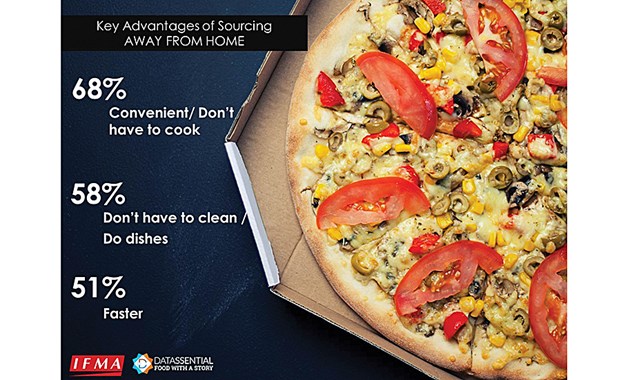Although it may seem as if the market is saturated with options, it is only just beginning to reach its potential. Consumers crave convenience, affordability, and they increasingly value the luxury of enjoying a restaurant-quality meal in their home. IFMA and Datassential examine the growth and potential of foodservice at home.
Whether it’s the proliferation of delivery options, our increasingly busy lifestyle, or the allure of eating with the company of Netflix, foodservice at home is rapidly growing and is poised to dramatically impact the industry.

Operators and retailers across segments are all finding their way into the mix, improving their offerings by partnering with third-party delivery providers, expanding to-go options, or offering reheatable meals for consumers to enjoy in the comfort of their homes. With an abundance of ordering portals and meal kit delivery services, manufacturers, operators, and retailers must understand the challenges and opportunities—in order to strategically develop a strong at-home program.
This topic was one of the 15 topics covered in the IFMA Consumer Planning Program (CPP), a year-long research study conducted in partnership with Datassential, a foodservice trends and data research firm based in Chicago.
Options
Foodservice at home was once limited to the supermarket’s home meal replacements (HMR) and the few restaurants that offered carryout or delivery. For many families, these foodservice-at-home occasions were rare—indicating a special night or exhausted adults.
Now, restaurants and retail outlets understand that consumers want a restaurant-quality meal within their home and often want their night-in to mimic a night-out. This has led to more restaurants offering delivery. More importantly, it has forced the industry to reevaluate the consumer experience from beginning to end in order to create an enjoyable and memorable meal. This spurred a new focus on take-out containers, marketing messages, crowdsourced delivery, collaboration with online ordering partners, as well as websites or smartphone apps that prioritize ease of ordering. To read the full article, as seen in Prepared Foods magazine, click here.
